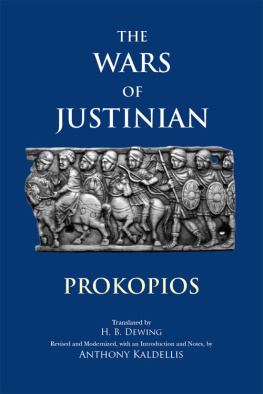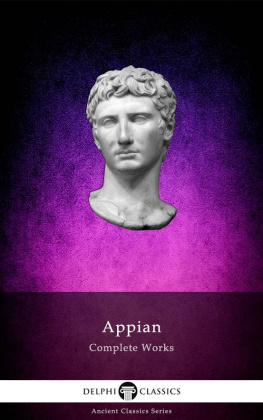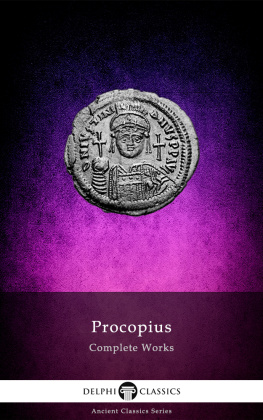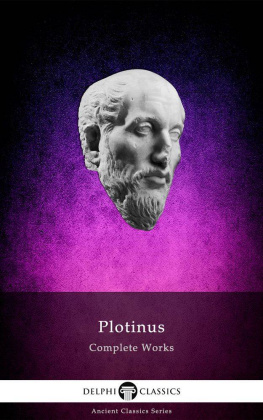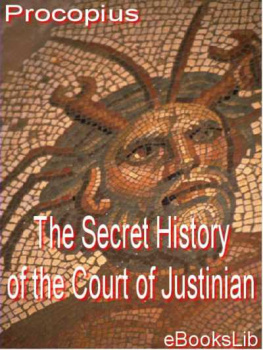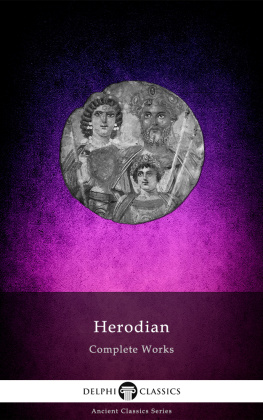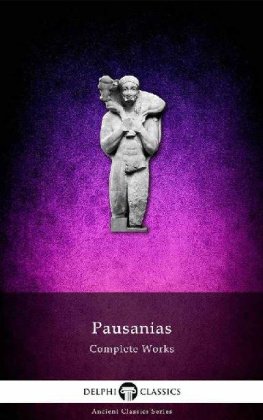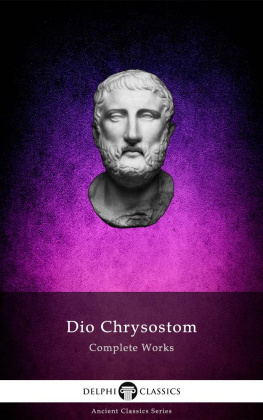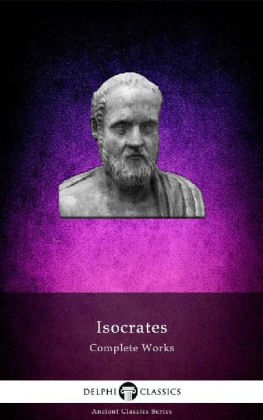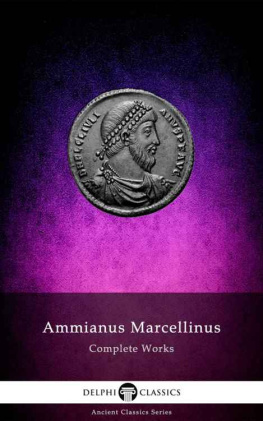The Complete Works of
PROCOPIUS
(c. AD 500-c. 554)

Contents

Delphi Classics 2016
Version 1

The Complete Works of
PROCOPIUS OF CAESAREA
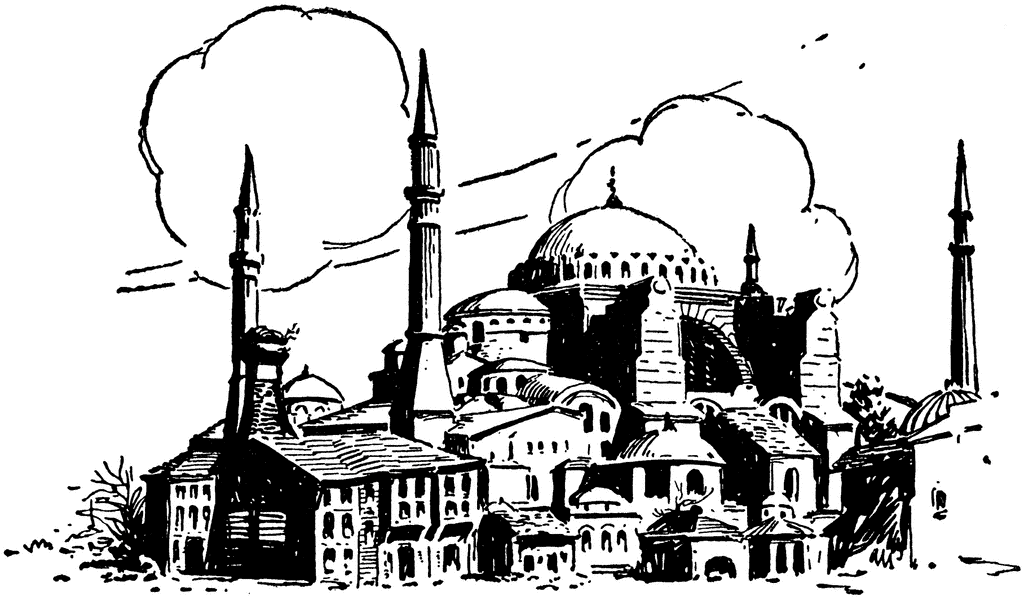
By Delphi Classics, 2016
COPYRIGHT
Complete Works of Procopius
First published in the United Kingdom in 2016 by Delphi Classics.
Delphi Classics, 2016.
All rights reserved. No part of this publication may be reproduced, stored in a retrieval system, or transmitted, in any form or by any means, without the prior permission in writing of the publisher, nor be otherwise circulated in any form other than that in which it is published.
Delphi Classics
is an imprint of
Delphi Publishing Ltd
Hastings, East Sussex
United Kingdom
Contact: sales@delphiclassics.com
www.delphiclassics.com
The Translations

Caesarea, formerly in the Roman Province Palaestina Prima and now a town in Israel, located mid-way between Tel Aviv and Haifa Procopius birthplace

Ancient ruins at Caesarea
THE WARS OF JUSTINIAN

Translated by H. B. Dewing
Procopius most important work, The Wars of Justinian , is composed of eight books and recounts the Persian Wars of the emperors Justinus and Justinian. It is believed that the first seven books were originally published as a whole in c. AD 545, but were updated several years later, with the latest event mentioned belonging to early 551. The first two books are popularly known as The Persian War and concern the conflict between the Romans and Sassanid Persia in Mesopotamia, Syria, Armenia, Lazica and Caucasian Iberia. Procopius details the campaigns of the Sasanian Shah Kavadh I, the Nika riots in Constantinople in 532, the war by Kavadhs successor, Khosrau I, in 540 and his destruction of Antioch and the transportation of its inhabitants to Mesopotamia, as well as reporting on the great plague that devastated Constantinople in 542. These books also cover in detail the early career of the Roman general Belisarius, Procopius patron.
The next two books, known as The Vandal War , deal with Belisarius successful campaign against the Vandal kingdom in Roman Africa. The remaining books cover The Gothic War , including Belisarius attempts to recapture Italy, then under the rule of the Ostrogoths, with accounts of the sieges of Naples and Rome. The later addition of the eighth book, The Gothic War IV , concerns events in 552/553, when a Roman army led by the eunuch Narses finally destroyed the Ostrogothic kingdom. This book also covers campaigns both in Italy and on the Eastern frontier.
The Wars of Justinian was largely influential on later Byzantine history-writing and a continuation of Procopius work was written after his death by the poet and historian Agathias of Myrina. Procopius great work consists largely of military history, with much scarce information about peoples, places and special events. A diligent and judicious narrator of facts and developments, Procopius often reveals adept powers of description, demonstrating a just treatment of the empires enemies, while boldly criticising the emperor Justinian.

Golden coin of Kavadh I, (c. 473-531) was the Sassanid king of Persia from 488 to 531. A son of Peroz I (457484), he was crowned by the nobles in place of his deposed and blinded uncle Balash (484488).

The Hippodrome in Istanbul site of the Nika Riots, which took place over the course of a week in Constantinople in AD 532. It was the most violent riot in the history of the city, with nearly half the city being burned or destroyed and tens of thousands of people killed.
CONTENTS

Mosaic of Belisarius, Basilica of San Vitale, Ravenna, Italy

Mosaic of Justinian I, San Vitale, Ravenna, 6th century A.D.
INTRODUCTION
Procopius is known to posterity as the historian of the eventful reign of Justinian (527-565 A.D.), and the chronicler of the great deeds of the general Belisarius. He was born late in the fifth century in the city of Caesarea in Palestine. As to his education and early years we are not informed, but we know that he studied to fit himself for the legal profession. He came as a young man to Constantinople, and seems to have made his mark immediately. For as early as the year 527 he was appointed legal adviser and private secretary to Belisarius, then a very young man who had been serving on the staff of the general Justinian, and had only recently been advanced to the office of general. Shortly after this Justinian was called by his uncle Justinus to share the throne of the Roman Empire, and four months later Justinus died, leaving Justinian sole emperor of the Romans. Thus the stage was set for the scenes which are presented in the pages of Procopius. His own activity continued till well nigh the end of Justinians life, and he seems to have outlived his hero, Belisarius.
During the eventful years of Belisarius campaigning in Africa, in Italy, and in the East, Procopius was moving about with him and was an eye-witness of the events he describes in his writings. In 527 we find him in Mesopotamia; in 533 he accompanied Belisarius to Africa; and in 536 he journeyed with him to Italy. He was therefore quite correct in the assertion which he makes rather modestly in the introduction of his history, that he was better qualified than anyone else to write the history of that period. Besides his intimacy with Belisarius it should be added that his position gave him the further advantage of a certain standing at the imperial court in Constantinople, and brought him the acquaintance of many of the leading men of his day. Thus we have the testimony of one intimately associated with the administration, and this, together with the importance of the events through which he lived, makes his record exceedingly interesting as well as historically important. One must admit that his position was not one to encourage impartiality in his presentation of facts, and that the imperial favour was not won by plain speaking; nevertheless we have before us a man who could not obliterate himself enough to play the abject flatterer always, and he gives us the reverse, too, of his brilliant picture, as we shall see presently.
Next page

